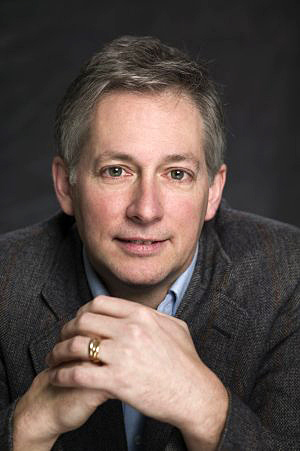
March 11, 2009 – As researchers make increasing use of computation and large sets of data, they say there is a need to invest more in computer, information and communication technologies known as “cyberinfrastructure.”
That will be the topic of discussion this Friday, March 13, when the University of Utah holds its first Campus Cyberinfrastructure Day with the theme of “Enabling Research in a Data-Driven World.”
The keynote speaker will be astrophysicist Edward Seidel, director of the National Science Foundation’s (NSF) Office of Cyberinfrastructure. His lecture is titled, “Cyberinfrastructure and Computational Science for Research and Education.”
The event runs from 9 a.m. to 2:30 p.m., with Seidel’s lecture scheduled from 9:15 a.m. to 10:15 a.m. in room 295 of the Frederick Albert Sutton Building, which is the new geology building on 100 South. Overflow seating will be available in the first floor auditorium of INSCC, the Intermountain Network and Scientific Computation Center, located due north of the Park Building.
Media are invited to cover Cyberinfrastructure Day, and Seidel will be available for interviews immediately following his talk. The public also is invited; however, those attending should R.S.V.P. in advance at www.it.utah.edu/ci-day
According to event organizers, “researchers today in a wide variety of academic disciplines are facing increasing challenges in acquiring, managing and distributing vast amounts of data. The University of Utah’s first Campus Cyberinfrastructure Day will explore various approaches that outside experts and university faculty are pursuing to manage and comprehend data more effectively.”
Seidel says cyberinfrastructure “is transforming not only science and engineering, but all disciplines and society itself. … With examples ranging from astrophysics to emergency forecasting to applications in humanities and social sciences, I will describe the need, the potential and the transformative impact of cyberinfrastructure” and NSF efforts to bolster it.
Expanding Cyberinfrastructure in Utah
An expert group says cyberinfrastructure “consists of computing systems, data storage systems, data repositories and advanced instruments, visualization environments and people – all linked together by software and advanced networks to improve research productivity and enable discoveries and breakthroughs not otherwise possible.”
Steve Corbató, the University of Utah’s director of cyberinfrastructure strategic initiatives, says the need for expanded cyberinfrastructure arises because many traditionally observational sciences such as biology and the social sciences “are becoming increasingly computational and bringing new requirements for storing and understanding data, and developing and maintaining complex software.”
Corbató and his colleagues want to help University of Utah researchers capitalize on NSF’s role in President Obama’s economic stimulus plan to revitalize the economy.
“Within the federal stimulus package recently signed into law, there are a number of opportunities for developing ‘smart, green’ cyberinfrastructure resources in addition to the more traditional forms of ‘bricks and mortar’ infrastructure – that is, roads, bridges and buildings,” says Stephen Hess, the university’s chief information officer.
Vice President for Research Tom Parks adds: “We are positioning the U in light of its faculty research strengths in computational science and statewide projects – such as USTAR [Utah Science, Technology and Research initiative] and the Utah Education Network – to enable us to play more prominent roles nationally.”
Corbató adds: “Over the past several years, the University of Utah has been aggressively pursuing cyberinfrastructure projects. Examples include the development of a new state-of-the-art data center off campus and an optical network in Salt Lake City to support high-speed data transfers, as well as the university’s acquisition of a new computing cluster devoted to complex problem solving.”
That $800,000 supercomputing cluster, known as Updraft, includes 512 quad-core processors and recently ranked 253rd globally in a survey of computing horsepower.
In addition to Seidel, other speakers and their topics during Campus Cyberinfrastructure Day are:
- 10:30 a.m., Valerio Pascucci, of the University of Utah Scientific Computing and Imaging Institute, “Multiscale data streaming for interactive exploration of massive scientific data.”
- 11 a.m., Juliana Friere, associate professor of computer science at the University of Utah, “Provenance in Science: Challenges and Opportunities.”
- 11:30 a.m., Lewis Frey, assistant professor of biomedical informatics at the University of Utah, “Addressing the Data Tsunami.”
- 1 p.m., William Michener, researcher professor of biology, University of New Mexico, “Data-intensive environmental research: re-envisioning science, cyber- infrastructure and institutions.”
- 1:40 p.m., Sayeed Choudhury, associate dean for library digital programs at Johns Hopkins University, “Rethinking Scholarly Communication: Building the Data Curation Infrastructure.”
- 2:20 p.m., Joyce Ogburn, director, University of Utah Marriott Library, concluding remarks.
Abstracts summarizing the above talks may be found at:
